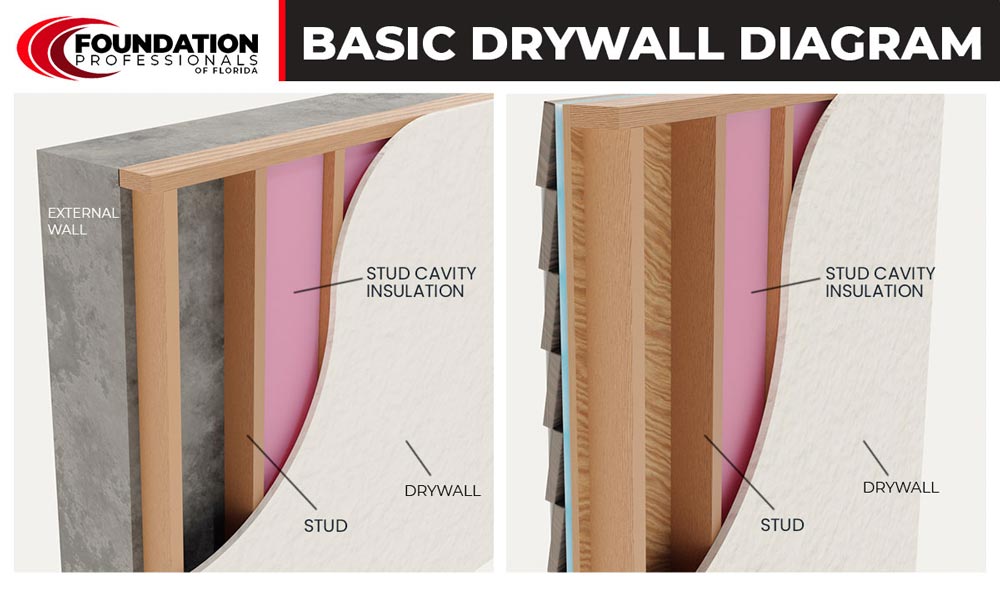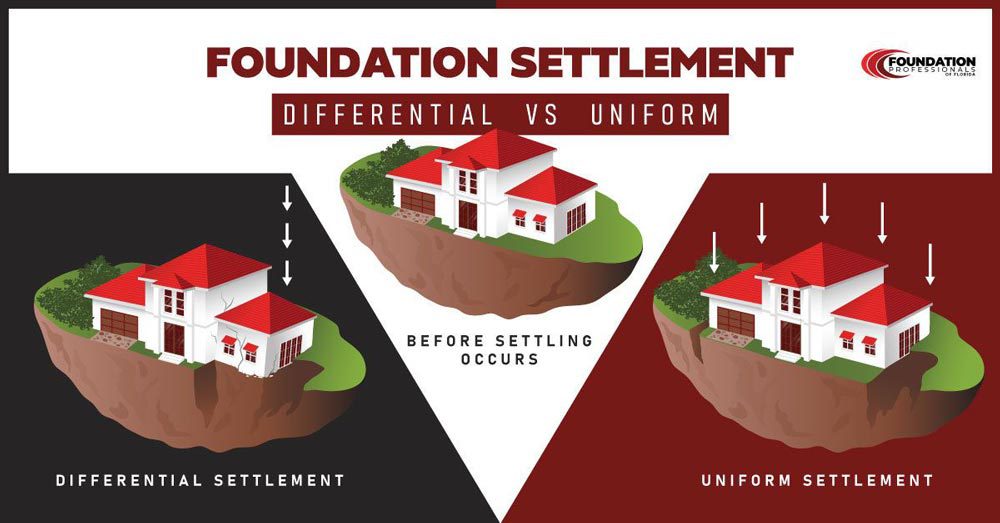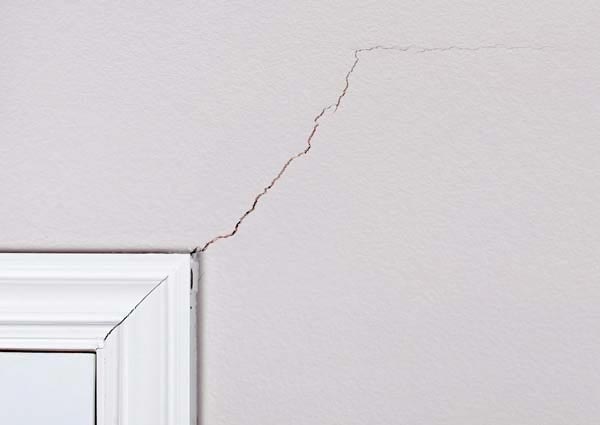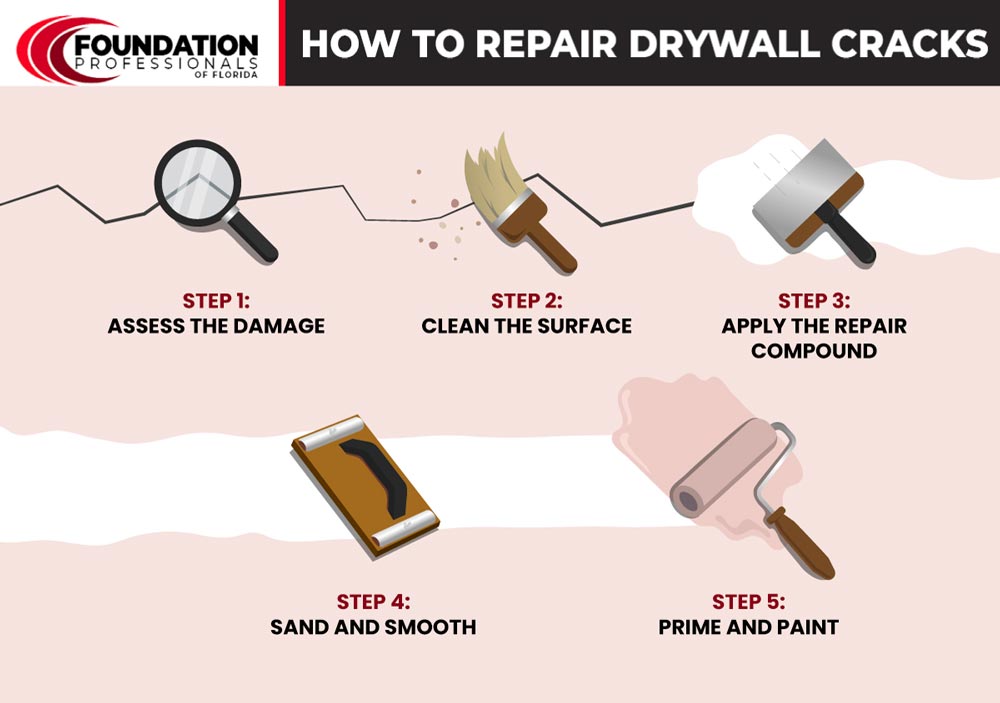Looking for information about drywall cracks? If so, you’ve landed on the right page because that’s what we’re going to review in this article. We’ll go over drywall, why it cracks, repair options, and more.
What Is Drywall?
Drywall – also known as plasterboard, sheetrock, or gypsum board – is a popular building material used for interior walls and ceilings in residential and commercial construction. Made from gypsum, a naturally occurring mineral, drywall is typically formed into large sheets and covered on both sides with paper or fiberglass matting.
One of the primary advantages of drywall is its ease of installation. Compared to traditional plaster, which requires multiple coats and extended drying time, drywall can be quickly hung and finished with joint compound, sanded, and painted or wallpapered within a day or two. This makes it a cost-effective and efficient option for construction projects.
Moreover, drywall is an eco-friendly material made from renewable resources and can be recycled at the end of its useful life. It’s also fire-resistant, which is a crucial safety feature for many residential and commercial buildings.
Additionally, acoustic drywall can be used to reduce noise levels within a building, making it ideal for sound-sensitive environments such as movie theaters and recording studios.
Why Does Drywall Crack?
Changes in temperature and humidity
One of the most common reasons for drywall cracking is changes in temperature and humidity. As the temperature and humidity levels fluctuate, drywall expands and contracts. Over time, this can cause the drywall to become brittle and more susceptible to cracking, especially if the fluctuations are extreme or abrupt.
Improper installation
Another factor contributing to drywall cracking is poor installation. If drywall isn’t properly fastened to the studs or joists, it can shift and move over time, leading to cracks and instability. Additionally, if there’s a problem with the building’s framing, it can lead to uneven weight distribution, putting stress on the drywall and causing it to crack.
Uniform foundation settlement in a new home
Uniform foundation settlement is also a common cause of drywall cracking. As a foundation settles slightly into the soil after construction, drywall cracks can form.
Differential foundation settlement
Differential foundation settlement is a phenomenon where certain areas of a foundation settle into the ground more than others, causing uneven settlement and structural damage to a building. This is a common problem in older or poorly-built buildings, which can ultimately lead to drywall cracks.
Other causes
Finally, external factors such as extreme weather conditions, earthquakes, nearby construction work, and plumbing leaks can all cause drywall to crack.
Where Do Drywall Cracks Usually Form?
Drywall cracks typically form at the joints, where two pieces of drywall meet, as these are the weakest spots in the structure. The most common places that drywall cracks form include corners, doors and window frames, ceiling corners, and areas where wall plates are attached.
For more information about cracks, see Common Signs Of Foundation Issues In Residential Homes.
Drywall Cracks Could Be A Sign Of A Foundation Problem
Drywall cracks alone don’t necessarily mean there’s a foundation problem. Often, they can be caused by simple wear and tear, improperly taped drywall, etc. We call these non-structural drywall cracks because they don’t affect the building’s structural integrity. However, if drywall cracks appear suddenly and are accompanied by other signs of foundation problems such as uneven floors, gaps around doors or windows, or windows and doors that are difficult to open or close, they could be drywall cracks caused by a structural problem.
While hairline drywall cracks probably aren’t anything to worry about, larger drywall cracks could indicate a serious foundation problem such as differential settlement. If you see any large or suspicious drywall cracks, contact a foundation repair contractor right away and ask for an evaluation.
How To Repair Drywall Cracks?
If you’re sure the drywall crack wasn’t caused by a foundation problem, you can probably repair the crack yourself. Here’s a step-by-step guide on how to fix drywall cracks that weren’t caused by a structural issue:
Step 1 – Assess the Damage – Before you start repairing drywall cracks, it’s important to assess the extent of the damage. Small cracks that are less than 1/8-inch-wide can be easily fixed using just some spackle or drywall compound. However, larger cracks may require additional reinforcement measures such as drywall tape to ensure full restoration.
Step 2 – Clean the Surface – The next step is to make sure the surface around the crack is free of debris, cobwebs, and dust. Use a vacuum cleaner or a brush to clean the area thoroughly. This will ensure the repair adheres to the surface.
Step 3 – Apply the Repair Compound – Using a putty knife, apply the spackle or drywall compound into the crack. Make sure to fill the crack completely and scrape off any excess compound. For larger cracks, you may need to use drywall tape over the crack. Apply joint compound liberally over the tape and then sand it down smoothly.
Step 4 – Sand and Smooth – Once the repair compound dries completely, use sandpaper to smooth down the surface. You can start with coarse drywall sandpaper and then switch to the fine-grit sandpaper for a smooth finish. Sand away as much excess compound as possible so that the repaired surface blends in perfectly with the original drywall surface.
Step 5 – Prime and Paint – Finally, use a primer over the repaired area. Once dry, use paint to match the color of the surrounding wall and give it a finished and polished appearance.
These steps can take care of minor to moderate cracks in drywall. If you see a larger drywall crack you suspect was caused by a structural issue, contact a pro and ask for an evaluation.
Note: Foundation Professionals of Florida does not offer drywall repair services.
How To Prevent Drywall Cracks
Fortunately, there are steps you can take to help prevent drywall cracks. These include the following:
1. Use Proper Installation Techniques – One of the primary causes of drywall cracks is incorrect installation. Therefore, it’s essential to ensure the drywall is properly installed.
2. Humidity Control – Changes in humidity can cause drywall to expand or contract, leading to cracks. To prevent this, it’s important to maintain a consistent humidity level in your home. This may include using a dehumidifier.
3. Temperature Control – Extreme temperatures can also cause drywall to crack. It’s important to keep your home at a consistent temperature, without drastic fluctuations. Insulation is one way to help regulate temperature and prevent cracks caused by temperature changes.
4. Avoid Heavy Items on Walls – Hanging heavy items, such as shelves or artwork, can put stress on your walls and lead to cracks over time. When hanging items, use anchors or wall studs to distribute the weight evenly and avoid putting too much stress on any one area.
5. Repair Cracks Immediately – Even with preventative measures, cracks may still occur. It’s important to repair cracks as soon as possible to prevent them from getting worse. Use a joint compound and drywall tape to fix small cracks, or hire a professional to repair larger cracks caused by structural issues.
While a drywall crack might be nothing more than a cosmetic issue caused by something like improperly taped drywall, it could also signify a serious foundation problem. When in doubt, it’s always best to consult a professional. If you’re concerned about one or more drywall cracks in your home, contact us today to schedule an evaluation and receive a repair estimate.





